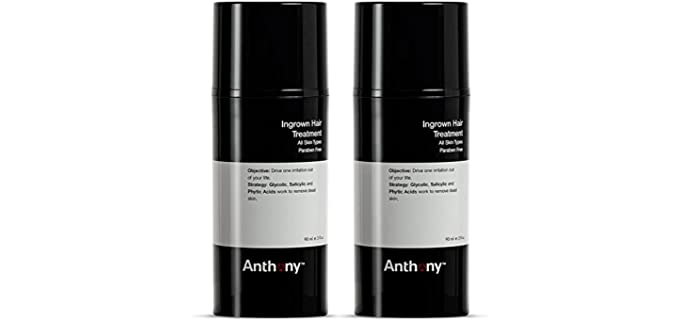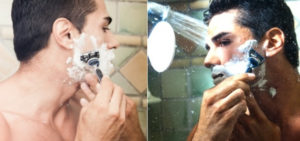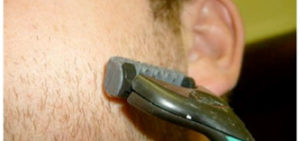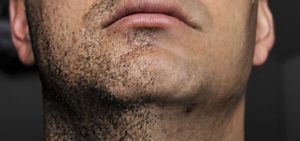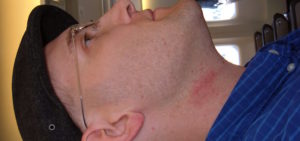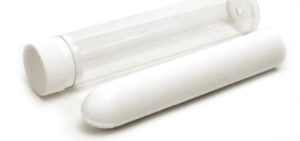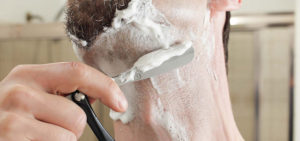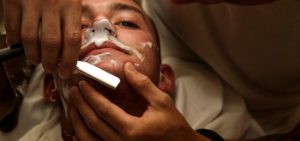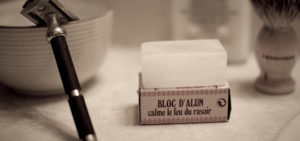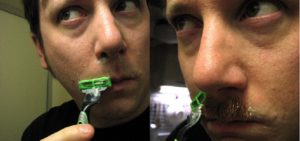Many men experience irritation after shaving; some are likely to develop ingrown hairs from this irritation.
Razor Bumps or ingrown hairs are a more chronic form of irritation after shaving, with a few causes.
However, the most likely victims of ingrown hair are men with more curly hair or African men.
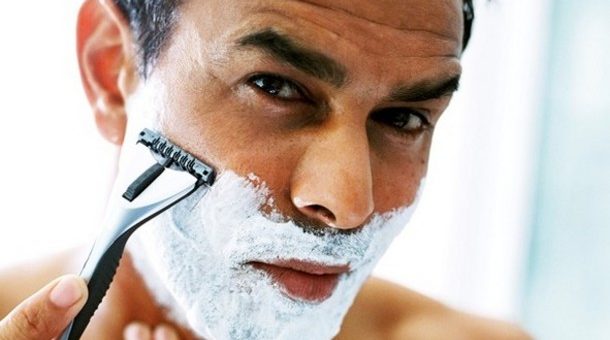
Table of Contents
What Exactly is an Ingrown Hair
Ingrown hairs usually occur when the face is irritated and can stem from Razor Bumps. They are a condition in which hair either curls backward or sideways into your skin or where the skin grows over very short and irritated hair follicles.
This condition is prevalent in men with thick, coarse, or curly hair. Ingrown hair may often be accompanied by an infection of the hair follicle, which causes a red bump, or sometimes not. These red bumps are likewise called razor bumps.
Whatever the cause or type of ingrown hairs, they are unsightly and can be painful or irritating when infected.
Causes of Ingrown Hairs
Ingrown hairs may be genetic, or because of an increase in certain sex hormones, it may also be caused by other external factors.
As I have mentioned before, irritation from shaving can cause ingrown hairs, which may become infected and result in razor bumps and small red bumps on the face containing ingrown hair.
Here are some factors to consider when it comes to the causes of ingrown hairs;
- Individuals with curly, coarse, or thick hair are more likely to develop ingrown hairs.
- Certain sex hormones can cause excessive hair growth, which increases the chance of getting ingrown hair after shaving.
- Improperly preparing your skin for shaving will result in irritation and a razor burn that can develop into ingrown hairs and razor bumps.
- Not exfoliating your face regularly or before shaving increases the risk of ingrown hairs.
- An unsanitary and blunt razor is a major culprit in razor burn and can result in ingrown hairs.
- In many cases, sensitive skin can also be subject to razor burn, irritation, and likely ingrown hairs.
- Poor quality or the wrong skincare products can cause irritation and breakouts on your face, resulting in ingrown hairs.
Treating Ingrown Hairs
Soften
Use a warm, clean washcloth and hold it against your skin to open up your pores and hair follicles. This will ease painful bumps and help prepare your skin for exfoliation.
Exfoliate
You can exfoliate your face using a gentle facial sponge, brush, or scrub, such as a sugar scrub. Gently massage your face in circular motions with the scrub method of your choice for a few minutes. If this does not help to exfoliate your face properly, you can always ask your physician for a retinoid prescription to hasten the process.
Pull Out Ingrown Hairs
Unfortunately, ingrown hairs rarely grow back normally, so you must pull them out.
You can use a clean and sterilized needle to break the skin and lift the hair out, then use a tweezer to gently pull the hair out.
Avoid digging into your skin with the needle or tweezers; remove the hair with roots and gently break it off again.
Moisturise
Moisturize after thoroughly exfoliating and cleaning your face and removing all ingrown hairs. Try to use something nongreasy to reduce inflammation and help heal irritated skin. You can talk to your physician about a good steroid cream to reduce swelling and irritation.
Stop Shaving
If ingrown hairs or irritation worsens, it is a good idea not to shave for a short while or give more time between shaves. This may not be the short-term answer to your problems, but given time to heal, your skin will improve.
Preventing Ingrown Hairs
When it comes to shaving and other face care routines, there are a few things that can irritate your skin and cause ingrown hairs, so follow these tips to prevent irritation and ingrown hairs;
- Try to shave after you have showered when your skin is warm and moisturized. This will make hair softer and skin more pliable.
- Always exfoliate your face to prep it before shaving to prevent dead skin cells from getting in the way of the razor.
- For thicker or curly hair, I recommend a pre-shave oil.
- You can use a good quality shaving gel and apply generously; please feel free to apply when you need to shave against the grain.
- Then again, shaving with the grain is your safest option to prevent irritation and ingrown hairs.
- Shave using short and light single strokes, not placing too much pressure.
- Could you make sure that your razor blade is sharp and clean?
- Invest in good quality and the right razor type for your specific requirements. If you have sensitive skin, opt for a sensitive blade.
In Conclusion
Since man’s first razor, bumps, ingrown hairs, and irritation have blemished many skins. It has been proven that razor bumps are common in over 60% of the male population.
So utterly, somewhere along the line, you will see a bump or bruise when shaving, just like every sport has injuries.
Luckily, prevention and cure are at hand and pretty easy, too.
Following a good pre and post-shaving routine, which includes efficient exfoliation, can prevent and help ease irritation and ingrown hairs.
Most importantly, good quality, flexible safety razors such as the Defender Dual Head or Single Head razor can make a huge difference.
